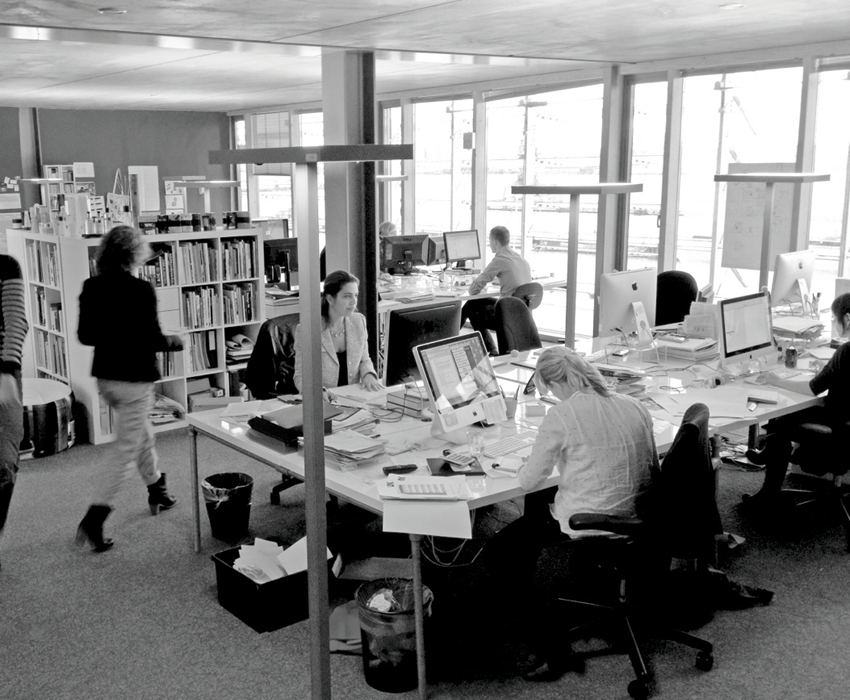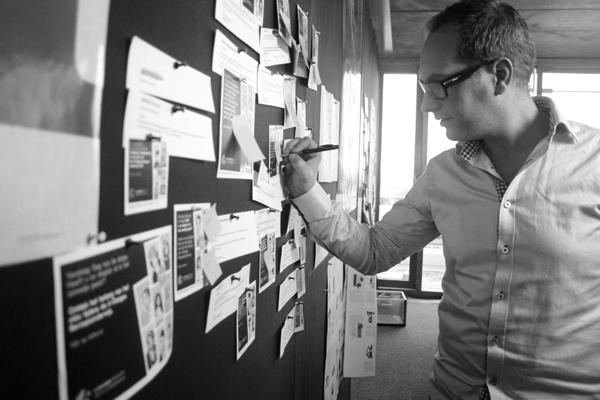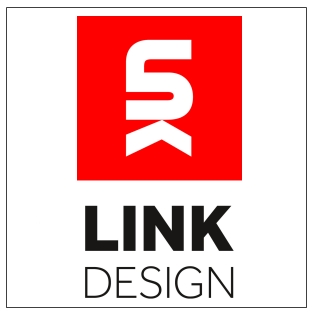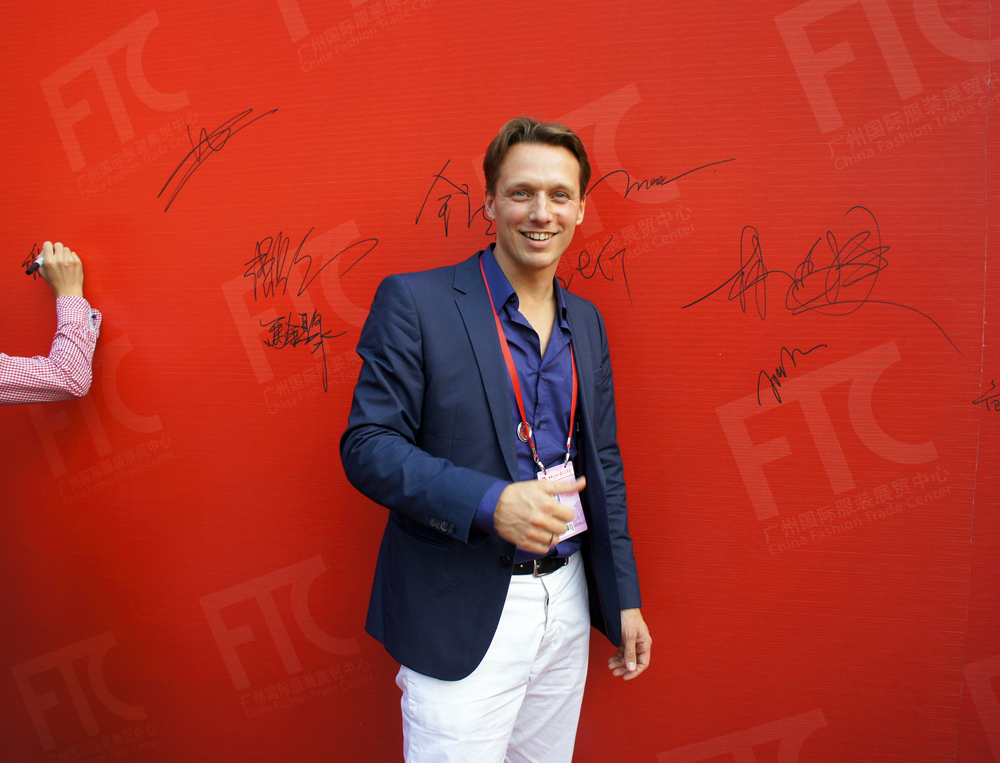Branding in China: The Story of Link Design
Link Design is a creative design agency with branches both in Amsterdam and Shanghai (上海). The company is specialised in branding in the broadest sense of the word: from strategy, logo and visual identity to brochures, packaging, websites, SEO strategies, campaigns and kick-off events. Link Design focuses on integrated design: created from the core competence of a brand, visualising the corporate DNA in all communications suitable for the market in which the brand operates. In this issue, GCI interviewed Mr. Marc de Roo, Link Design’s CEO Creative Strategy Director to learn more about their story in China.
Mr. De Roo, thank you for your enthusiasm to share your story about doing business with China. First of all, I’m curious about what made you come to China in the first place? The first time I went to China was in 2008, when I visited Hong Kong (香港 Xiānggăng). I was immediately intrigued by how fast the economy was moving. Until then, I had always looked towards New York and London as interesting markets, but suddenly I discovered the many possibilities of the Chinese market. What struck me was the large-scale transition from Original Equipment Manufacturers (OEMs) to Original Design Manufacturers (ODMs). There was a clear shift from companies that manufacture products or components bought and retailed by other companies to companies that design and manufacture products which are then specified and branded by another firm for sale.

What does the transition mean to you or your company?
This movement towards branding, which I particularly noticed in the Pearl River Delta region (珠江三角洲 Zhūjiāng Sānjiăozhōu) provided major possibilities for my company in China. I began doing research on Shenzhen (深圳), Shanghai and a few different cities. I found, particularly during the China Import and Export Fair (中国进出口商品交易会) in Guangzhou (广州) a huge number of upcoming Chinese companies. Some of these companies would actually soon emerge as some of the world’s biggest. However, none of them featured in the lists of top 100 global companies. I thought this was strange, so I decided to focus my attention more on helping Chinese outbound investment, and on figuring out how I could actually help Chinese manufacturers and Chinese factories make the transition from OEM to ODM.
You clearly observed an important transformation in the Chinese economy. But identifying a trend is one thing, actually setting about helping Chinese manufacturers and factories is quite another. Did you receive any support?
The Hong Kong investment agency, InvestHK, were highly supportive, offering free advice and services to overseas companies looking to set up an office in Hong Kong. The China Council for the Promotion of International Trade (CCPIT) Shenzhen (中国国际贸易促进委员会深圳市分会) and CCPIT Shanghai (中国国际贸易促进委员会上海市分会) lent me a helping hand, too. The CCPIT promotes China’s international economic and commercial interests by developing business cooperation and exchanges with foreign countries.
What did you first find when developing a strategy for Chinese companies making the transition from OEM to ODM?
First, we started out with a focus on designing for the European market, helping Chinese manufacturers create products and branding for that market. Over the last three years, however, that has changed completely. I realised that most Chinese manufacturers are not really interested in branding all that much just yet. They are more product design-orientated and less branding- oriented. They want product designers to help them create a product that sells. In other words, they want an immediate result. In marketing, though, you have to invest first before you can earn money. It is a more long-term process that a lot of Chinese manufacturers are not very comfortable with yet.
Has this insight led you to make some changes?
Yes, that’s right. This perspective has slightly changed our business objective. We have turned it into more of a two-way street now. We help Chinese manufacturers with European branding and we are also helping European clients with their branding for the Chinese market. This presents us with a lot of the same difficulties and challenges as branding Chinese products for the European market does. Take cultural differences, for instance: you have to think about how to communicate the product – from the colours, the features and benefits of a product. They all ride on the cultural context. But the benefit for us in also helping European companies enter the Chinese market is that these companies are more used to Western ideas about branding, so they show a greater willingness to invest in this area.

How can you help your European clients get to know the Chinese customer and to execute their market plan?
We first advise our European clients to come to China, so as to get a feel for the market. Afterwards we explain that there is no such thing as one China. The country is huge with over 700 cities bigger then Geneva. Take Shanghai:
it has over 23 million people, which is the size of the Netherlands, and yet, Shanghai is completely different from other Chinese cities, such as Shenzhen or Guangzhou. Next, we advise them to look at the product or service they have to offer, to see if it would sell and if it would be appealing in China. If so, in which area of China could it sell? Market research is very important here. After conducting this research, we help our clients decide on how to present both their company and their product. Is a product in demand? Is it something that people actually want to use or should use? What is the benefit? These are the kind of questions we have to find answer to.
Drawing on your several years’ experience of China, what would say is a key difference between the European and Chinese market and their respective customers?
Contrary to the European market, Chinese consumers attach importance to authenticity and heritage. This involves advertising certain company features, something the European market tends not to do. European companies want to be modern and look forward instead of looking back at the past. But when a European company goes to China, past achievements are something they should actively consider and really advertise: the Chinese embrace heritage and authenticity. For example, we are working for some companies that have been in existence since the 1600s or the 1800s. For a European, this would be a rather small and unimportant detail, but that is something you would want to emphasise in China, making it clearly visible on your logo, for example.
Other than authenticity and heritage, don’t the Chinese attach great importance to endorsements of products?
Quite so! Handshakes with ministers or mayors are very important in China, so we encourage our clients to make sure they capture these moments for later use, especially when influential people endorse the product. If you have a
good relationship with your mayor, ask for an endorsement letter stating that you have been established in this town for a certain number of years and have always been a loyal citizen, for example. This gives companies a leg up in China, especially if you have a photograph of the mayor handing you the letter. Small details like this in a brochure may mean the difference between success and failure in some cases.
Visuals appear important in China: from photos to copies of letters. What other visual aspects should companies consider when entering the Chinese market?
Once again, there is no such thing as one China and there is not one kind of Chinese audience. However, some general commonalities exist, such as the popularity of the colour red. The appearance of certain numbers, too, is important. The unlucky number four should be avoided; it would be better to use the lucky number eight instead. Another general tendency is greater explanation in Chinese visual presentations. The visual design needs to be more educational. Brochures should therefore contain small visual representations of how to use the product; how to apply a specific make-up, for example. This is quite contrary to the European market.
Which form of communication is the most effective in China?
Sampling and on-premise presentations work really well for a retail product in China. A good social media strategy is also essential. Weibo (微博), the Chinese version of Twitter, for instance, is a widely used medium in China. For business-to-business products, attending events and delivering good presentations is the most effective means of communicating. For our business-to-business clients, we really look into their communication materials and advise them on what kind of brochures they have. Is it structured well, are they emphasising the correct things?

Do you have local people in your team to help you understand the local customs?
We pride ourselves on having a combination of local and non-local people, both in the Amsterdam and Shanghai team. It is always very interesting to strike a good balance of how much ‘local’ you want to add to your international European standard. We are hired by the Chinese because we are European. They want something non-Chinese, but at the same time they believe the Chinese way is the safest way, calling on us to listen to the local people on your team as they understand what they want. We particularly see this in the choice of design, use of colours or type of photography. If our advice becomes too local, though, we are no longer of any benefit to them because then we reduce ourselves to a ‘just another’ expensive design agency.
Can you provide an example of one of your successful stories, either in the Chinese or the European market?
For the European market, it has got to be the design of the new brochures for the Amsterdam branch of the Industrial and Commercial Bank of China (ICBC) (中国工商银行 Zhōngguó Gōngshāng Yínháng). Initially, we had an interesting discussion about the use of colour. The colour red is ICBC’s main colour. In China, it represents wealth, going forward and strong belief. On the Shanghai Stock Exchange, all the figures that go up are in red and the ones that go down are in green. Considering that it is exactly the opposite compared to European stock exchanges, it could create very big problems when presenting an annual report for the Dutch market. We were able to advise ICBC on how to adapt the design and the use of colours for the Dutch market. In the end, they were very happy, so much so that the set-up of our brochure is now being copied by other ICBC branches throughout Europe.
And for the Chinese market?
For the Chinese market, we had a Dutch client who has a completely new biochemical factory in China. Their product has the 100% Chinese GS label. That is quite unique because they are a Dutch company. We created a new communication strategy for them so they could present their company at fairs throughout China - by designing sampling products, a website, a brochure and iPad presentation all within one concept. The new communication materials turned the factory into a brand itself, which has been very successful for them.
Any final thoughts for a Western company which wants to enter the Chinese market?
They need to be very clear about the product, not about how to sell the product. We advise going back to the core of the product, starting all over again. Who wants to buy this product? How am I going to reach these people? What communication materials do I need to reach these people? Last but not least: come to China! Not just for a week, but for an extended period of time to really get to know the market.

Interviewed by Liu Jingyi (刘婧一)
Written by Ingrid Fischer

 Share on Facebook
Share on Facebook Share on Twitter
Share on Twitter Share on LinkedIn
Share on LinkedIn